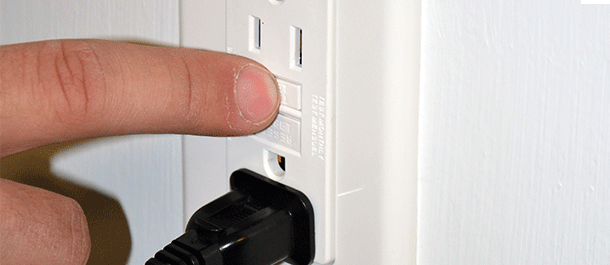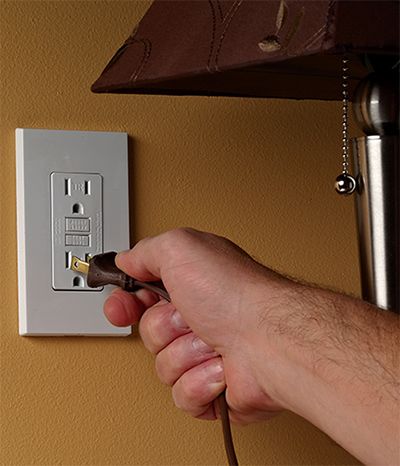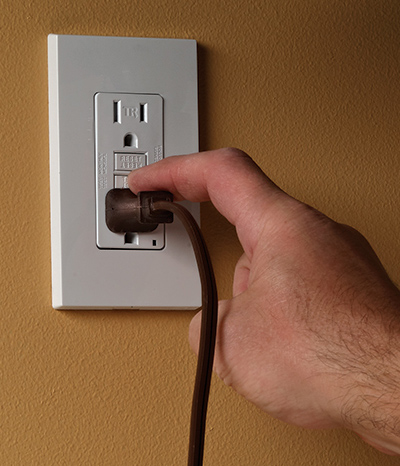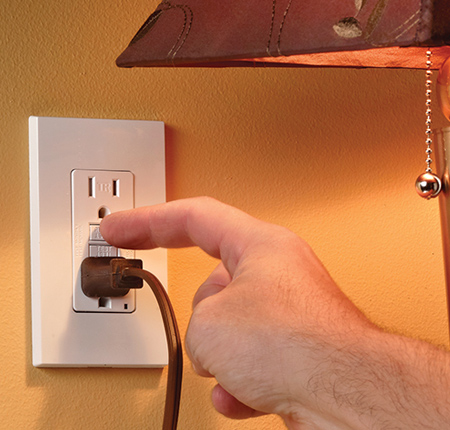How to test a Leviton GFCI (Ground Fault Circuit Interrupter)

For personal safety, it’s really important to have GFCI outlets in your home. As a matter of fact, they are required by the National Electrical Code® in wet and damp locations such as bathrooms, kitchens, basements, laundry rooms and any location an outlet is near a water source.
GFCI (Ground Fault Circuit Interrupter) outlets can be identified by the TEST and REST buttons located in the center of the outlet. They are specially designed and engineered to detect ground faults and respond by interrupting power to help prevent injury from electric shock. A ground fault is a case where, instead of following its normal safe path, electricity overloads a circuit, shorts a circuit or otherwise follows an undesirable path. For example, when moisture comes in contact with a device it can cause a ground fault and the ground fault creates a harmful electric shock. Without GFCI protection that ground fault can very well injure the person in its path.
Of course, the GFCI protection is only as good as the GFCI itself. Leviton SmartlockPro® GFCIs have a patented RESET/LOCKOUT feature which prevents reset of the device if for any reason it is unable to respond to a ground fault. Other GFCIs may still reset even though protection is no longer being provided, creating a false sense of security.
To make sure your GFCIs are in tip top operating condition it is recommended that you test them monthly. Testing is as easy as 1, 2, 3……
Steps:
Plug a lamp or radio into the GFCI outlet and turn it ON.

Push the TEST button on the GFCI.

The GFCI will trip and power to the lamp or radio will be cut OFF.
Your SmartlockPro GFCI is working properly only if you can push the RESET button on the GFCI to restore power to the lamp or radio.

All Leviton SmartLockPro GFCIs have a reset lockout feature that will not allow power to be restored if the GFCI is damaged or cannot respond to a ground fault. GFCI receptacles that fail this test should be replaced immediately by a licensed electrician.
So, take a moment to inventory your home outlets and make sure that any outlet near a water source is a GFCI outlet. If it’s not, no worries. GFCI outlets easily replace traditional outlets, fit in a standard wallbox and use standard wallplates. What could be smarter, simpler or safer than that?


